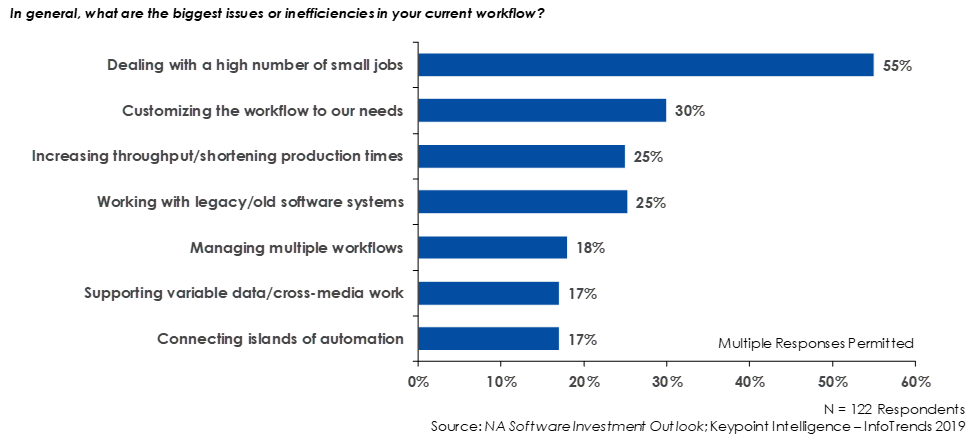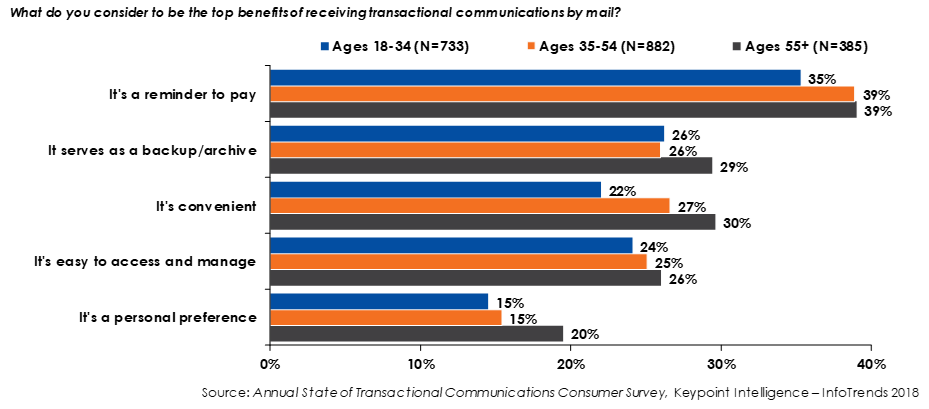Crystal balls are amazing — they help us peer into the future to give us a view into what may come. In reality, though, most of today’s perceived crystal ball operators are not magicians or mind readers; they are simply very skilled at reading the environment they live in and understanding the trends that surround them. With just a bit of help from quick assessments, leading indicators, market research, and guidance from their best customers, anyone can astound their teams by reading the crystal ball for printing and mailing operations. Here’s how!
Start with the basics by conducting a quick assessment of the current state of your printing and mailing operations. Ask yourself—how has the nature of jobs that you perform changed since the start of 2019? Are the runs shorter or longer? Are customers asking for different services? How are your customers’ requests for ad hoc jobs changing?
Beyond the jobs and contracts that you hold, take a look at the state of your printing, finishing, inserting, and mailing lines. Evaluate the age of the lines as well as the features. Are you using all of the available automation options? Are inserter bins being used efficiently? Do you have cameras? If so, are they actually in use? How is what they capture used by the production team?
These questions are necessary because of the workflow shortcomings that are frequently present in printing and mailing facilities of all sizes. A quick walk-through of a shop floor will often expose equipment that is running below optimal standards, disabled features, and capabilities and functions that aren’t aligned with the perceptions of the production staff.
Top Workflow Challenges from 2019

Once you know where you stand, take some time to examine the trends. These might include file-based processing, adding barcodes, adding value to data with geolocation options, and customer preference management as a service. Keypoint Intelligence – InfoTrends’ research has consistently shown that today’s customers want to be given a choice in how their providers communicate with them. Furthermore, direct mail remains a key channel across all age groups, even in this digital world. Since mail is well-understood by a variety of demographics, it is good business sense for all firms to focus on making the mail that they send to customers even more valuable.
Mailboxes Aren’t Going Away!

Focus on best practices to drive higher margins, reduce production problems, and create more options to grow the business. One best practice is to stay on top of workflow bottlenecks. If the nature of your work has changed from long runs to short runs over time, that may indicate a need to rework core workflow processes. Another best practice is to stay on top of postal discounts offered by the USPS and offer services. From adding color to envelopes to enabling Augmented Reality, there are a range of options that can enable mailers to become valued partners to their clients.
This is also a good time to evaluate your current state of automation. Most mailers invest in automation, but for many, ongoing improvements don’t continue after the investment is made. Today’s technologies are constantly improving on the hardware and software sides of the fence. By walking your current workflow and evaluating how automation is working, you can help ensure that 2020 is as profitable as possible. Walking the workflow and watching how the automation is working today is an important part of making sure that 2020 is as profitable as possible.
Part of looking into the future involves keeping up with the industry numbers. During your crystal ball gazing, though, bear in mind that the big numbers may not be as important as the segment-specific values that directly impact your business. If you serve the healthcare or insurance verticals, changes in regulations and requirements are ongoing. Printed and mailed communications remain a big part of these segments as the population ages and concerns about digital identity theft increase. The healthcare and insurance industries have already demonstrated interest in the use of Augmented Reality and data-driven communication.
Finally, talk to your best customers to assess their needs. What do they print and mail with other companies? What do they print that isn’t mailed? Would they benefit from a workshop to understand all of your capabilities? Once you’ve had a few conversations, make your 2020 predictions—and be bold! In addition to considering your current capabilities and the trends within the segments you serve, explore your company’s go-forward vision. By predicting the future you want, you can become a driver of the future you’ll get!
Nichole Jones is a Senior Product Manager for Keypoint Intelligence – InfoTrends’ Business Development Strategies Production Printing & Packaging Consulting Services. Ms. Jones’ responsibilities include managing the promotion and distribution of InfoTrends’ content and assisting clients and channels in building business development programs.
This article originally appeared in the January/February, 2020 issue of Mailing Systems Technology.











